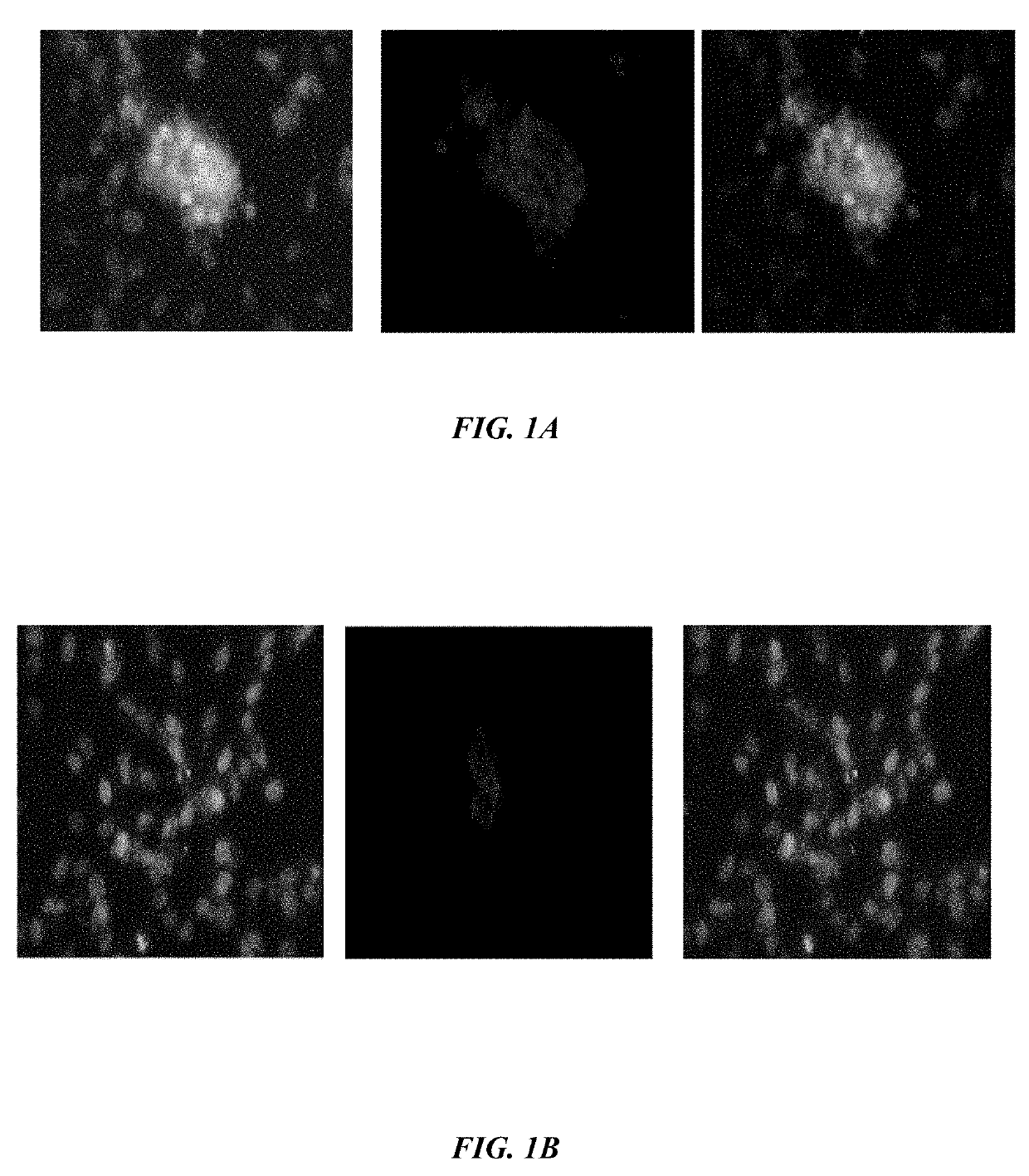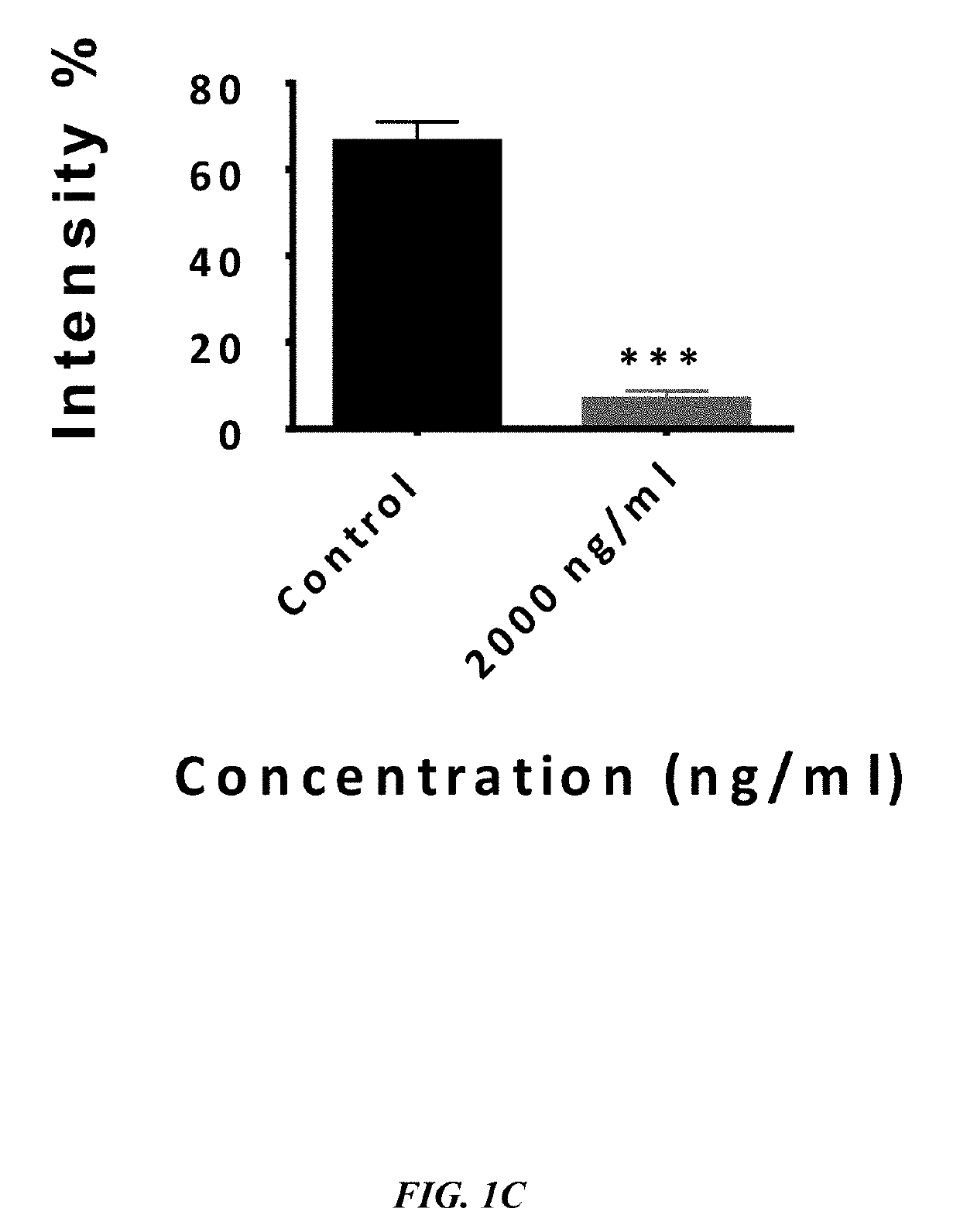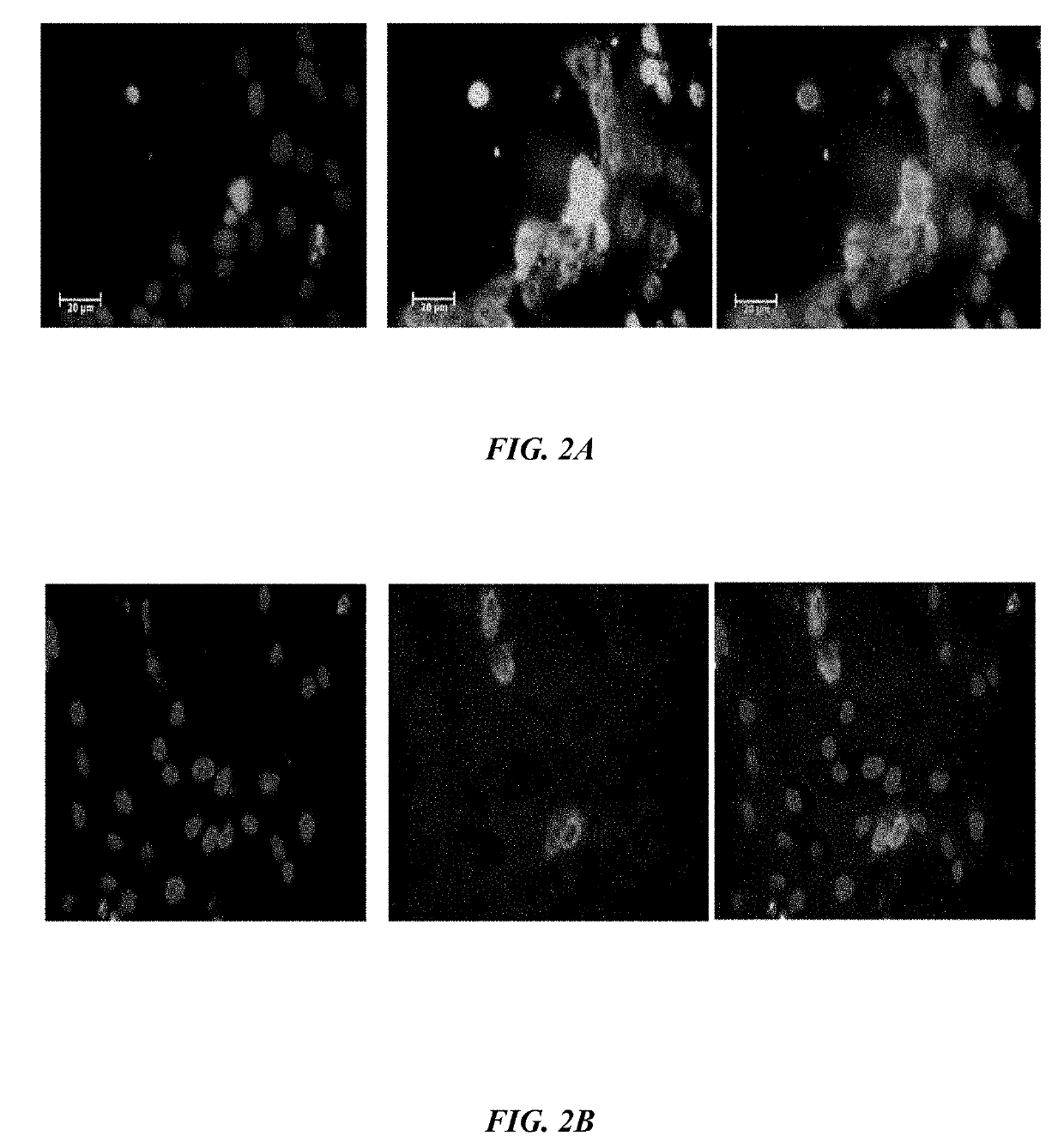Method of synthesizing antagonist peptides for cell growth
a cell growth and antagonist technology, applied in the field of cell growth, can solve the problems of difficult timely detection and treatment of cancer, high cost, and high cost, and achieve the effects of preventing blinding blood vessel growth, severe vision loss, and promoting blood vessel formation
- Summary
- Abstract
- Description
- Claims
- Application Information
AI Technical Summary
Benefits of technology
Problems solved by technology
Method used
Image
Examples
experiment-1
Synthesis of Antagonist Peptide for Vascular Endothelial Growth Factor (VEGF) and Fibroblast Growth Factor (FGF):
[0096]The antagonist peptide for VEGF and FGF are synthesized by using standard protocol disclosed by Shine Gene Bio-Technologies, Inc. Shanghai, China. The purity of antagonist peptide for VEGF and FGF is 90%. The quality of the synthesized peptides is confirmed by HPLC chromatogram, Mass spec analysis, and synthesis report for every peptide. The peptide cyclization is verified by the manufacturer. Further the disulfide bond formation is verified by a standard protocol.
[0097]According to one embodiment herein, the antagonist peptide for VEGF and FGF are synthesized and annotated as Seq. ID No. 1- Seq. ID No. 5.
[0098]According to one embodiment herein, Seq. ID No.1 is identified as 2HN-Cys-Gln-Val-Leu-Ile-Ser-Gln-Leu-Cys-COOH. Seq. ID No.1 consists of seven residues derived from VEGF-B (Gln46, Val48, Leu81, Ile83, Ser88, Gln89 and Leu90) and two Cys residues for chain cyc...
experiment-2
Analysis of Antagonist Activity of Pepetide Sequences of Vascular Endothelial Growth Factor (VEGF) [SEQ ID NO. 1-SEQ ID NO.4]
[0105]Binding Assay—To assess competitive binding assay of VEGF antagonists, Human Umbilical Vein Endothelial Cells(HUVECs) are cultured in 96-well plates (5000 cells / well) with Dulbecco's Modified Eagle Medium (DMEM) and 5% FBS incubated at 37° C. for overnight. After 24 h, the media of cells are changed with DMEM medium without fetal bovine serum (FBS) and the cells are treated (except the control) with 1000-2000 ng / ml the peptides at 37° C. for overnight. The cells are fixed by paraformaldehyde 4% at room temperature for 5-10 min. After 5-10 min the cells are rinsed with phosphate buffer saline (PBS) and permeabilized with PBS+ 0.3% Triton X-100. The cells are then blocked with 10% normal goat serum, BSA 1% / PBST for 20 minutes in the room temperature and followed by PE-conjugated anti-VEGFR-1 antibody (5000 ng / ml, Ab208739). After subjecting cells to blocki...
experiment-3
Analysis of Antagonist Activity of Pepetide Sequences of Basic Firbroblast Growth Factor (bFGF) [SEQ ID NO. 5]:
[0113]According to one embodiment herein, the Seq. ID No.5 is antagonist of bFGF. This peptide recognizes bFGFR.
[0114]Binding Assay—To assess competitive binding assay of bFGF antagonist, Human Umbilical Vein Endothelial Cells(HUVECs) are cultured in 96-well plates (5000 cells / well) with DMEM and 5% fetal bovine serum (FBS) incubated at 37° C. for overnight. After 24 h, the media in the 96-well plates is changed with DMEM without FBS and the cells are treated (except the control 96-well plates) with 1000-2000 ng / ml the peptides at 37° C. for overnight. The cells are fixed by 4% paraformaldehyde at room temperature for 5-10 min. After 5-10 minutes the cells are rinsed with phosphate buffer saline (PBS), permeabilized with PBS+0.3% Triton X-100. The growth of cells is inhibited with a mixture comprising 10% normal goat serum, bovine serum albumin (BSA) 1%PBST for 20 minutes i...
PUM
| Property | Measurement | Unit |
|---|---|---|
| Fraction | aaaaa | aaaaa |
| Density | aaaaa | aaaaa |
Abstract
Description
Claims
Application Information
 Login to View More
Login to View More - R&D
- Intellectual Property
- Life Sciences
- Materials
- Tech Scout
- Unparalleled Data Quality
- Higher Quality Content
- 60% Fewer Hallucinations
Browse by: Latest US Patents, China's latest patents, Technical Efficacy Thesaurus, Application Domain, Technology Topic, Popular Technical Reports.
© 2025 PatSnap. All rights reserved.Legal|Privacy policy|Modern Slavery Act Transparency Statement|Sitemap|About US| Contact US: help@patsnap.com



